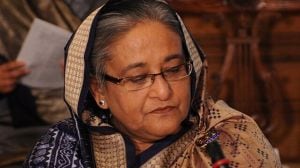In A Resurgent Northeast — Narratives of Change, bureaucrat Ashish Kundra offers a nuanced and forward-looking account of Northeast 2.0
The 1996-batch IAS officer of the AGMUT cadre takes into account both its troubled past and its present hunger for change.
 A Resurgent Northeast — Narratives of Change, Ashish Kundra, Harper Collins India, 164 pages, Rs 399 (Source: Amazon.in)
A Resurgent Northeast — Narratives of Change, Ashish Kundra, Harper Collins India, 164 pages, Rs 399 (Source: Amazon.in)
It is the turn of the new millennium. India’s Northeast is a hotbed of insurgencies. In Assam, the ULFA, although a depleting force, is still putting up a fight against the Indian state. Manipur is on the boil, with extrajudicial killings reported every other day. Five years into the first ceasefire agreement with the Centre, peace is still elusive for the Nagas. For all practical purposes, the entire region has possibly just one urban center: Guwahati, where an occasional bomb blast is not unheard of.
It is in this season of turbulence that civil servant Ashish Kundra sets foot in the Northeast. Though it is the relatively peaceful Mizoram that Kundra is posted to, the young officer, an “uninitiated Punjabi”, cannot help feeling the “culture shock” in his first brush with the Lushai Hills — the animosity for the “outsider” is palpable, the suspicion rife.
Cut to 2018. Kundra, a more seasoned bureaucrat now, is back in Mizoram after two decades. This time, the officer discovers a new vibe, a land abuzz with change, slowly but surely emerging from its troubled past.
It is this new Northeast, or the “Northeast 2.0”, if you will, that is the protagonist of Kundra’s debut book, A Resurgent Northeast: Narratives of Change. “A new drama is unfolding in the hills and valleys of the east” he writes in the introduction.
It is a change I, born and raised in this neck of the woods, attest to. Like Kundra, I have lived in, lived away and returned to (around the same time as the author) the Northeast — and sometimes, distance gives you a vantage point, which Kundra has used fully.
In his second stint in the Northeast (two years in Arunachal Pradesh and four in Mizoram), Kundra, a 1996-batch IAS officer of the Arunachal Pradesh-Goa-Mizoram and Union Territory (AGMUT) cadre, realises that most of his ideas about the region are dated. But as he crisscrosses the states, his sharp bureaucrat’s mind is quick to tap into the deeper changes at play.
In the 160-odd pages spread over 13 chapters, Kundra brings a fresh perspective taking the reader through, sometimes at a dizzying pace, a diversity of characters and changes. He darts between young entrepreneurs and sportspersons from the hinterlands at one end to the “lost decades”, when several insurgencies were alive and kicking. He traces the Centre’s policy perspective for the Northeast, from Nehru to Modi, across the history of independent India.
In the chapter from “Education to Enterprise”, Kundra talks about the mini start-up revolution afoot in the Northeast. He attributes some of these changes to not only infrastructure and a dramatic improvement in physical connectivity but also, a “hunger for change”. “Nimble-footed entrepreneurs are leveraging technology to break geographical barriers. Women are taking the lead in entrepreneurship. There is no dearth of ideas… The survival instinct and a hunger for catching up drives them to take risks and venture into new domains.”
But Kundra is rarely romantic, and doesn’t gloss over structural problems in the Northeast, whether it is corruption, the flailing health infrastructure or simmering border issues. Identity is still a hot button topic, and a “slight spark is enough to inflame passions”. He gives a clear-eyed representation of women’s social status in the Northeast, often romanticised in writings about the region. “Women present a picture of contrasts,” Kundra says in the chapter “Better Half of the Northeast” — whether it is the matrilineal society of Meghalaya, which can sometimes disempower women, or the lack of their political representation across the region. Given that the recent Urban Local Body polls in Nagaland, which gives 33 per cent reservation to women, were held back yet again due to pressure from tribal groups, these observations are prescient.
Kundra minces no words about the all-too powerful civil society organisations, which often play the role of informal pressure groups and sometimes, vigilante bodies. He calls for a “delicate balance” — Mizoram’s Young Mizo Association, known for its diverse range of social work, for example, needs to be a “partner for development rather than a disruptor”, he writes. These instances are testament to the author’s deep understanding of the Northeast, nuances often missed in most “mainland” writing on the region.
What, however, I did miss in the book is the personal. Some personal anecdotes — both his and the people he has written about — would have infused it with a lot more colour, making it a more engaging read. For example, in the chapter about people coming back home and becoming entrepreneurs, we get to know little about the person and what the motivations behind the move were. Also, I couldn’t help but notice the mismatch between Kundra’s honest portrayal of change and the same old colonial trope of token tribe-on-cover for any book on the Northeast (publishers take note). One would do well not to judge this book by its cover! That said, Kundra’s book is an important addition to understanding the Northeast of today. It is the rare book, which is not only historically well-informed, but also, forward looking.



- 01
- 02
- 03
- 04
- 05




























